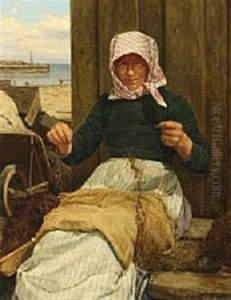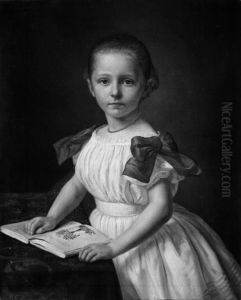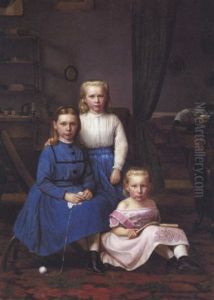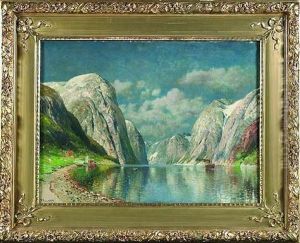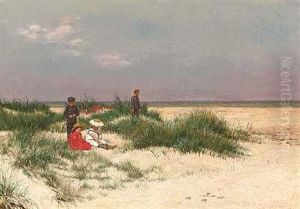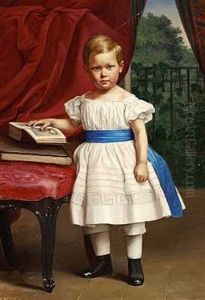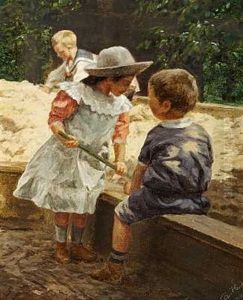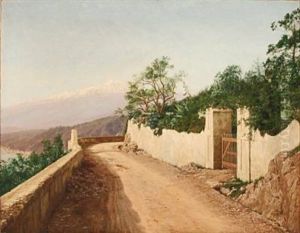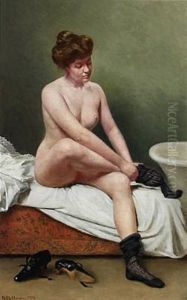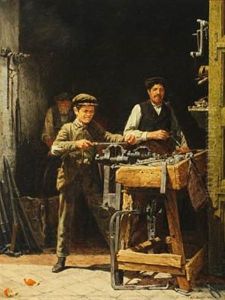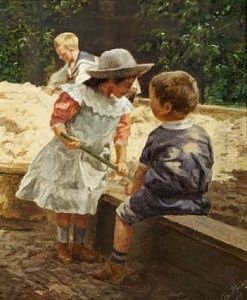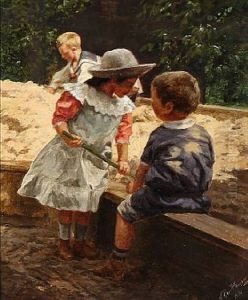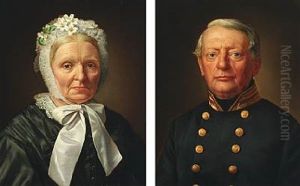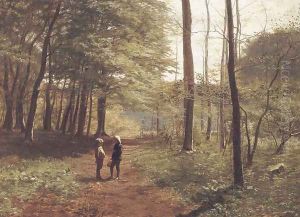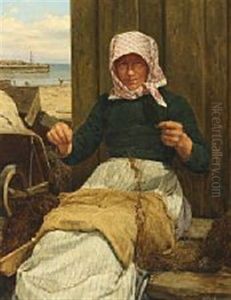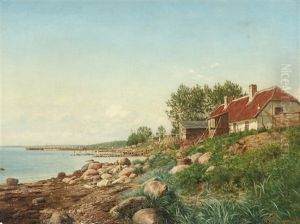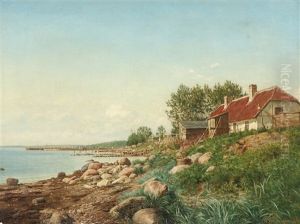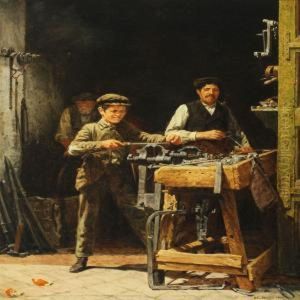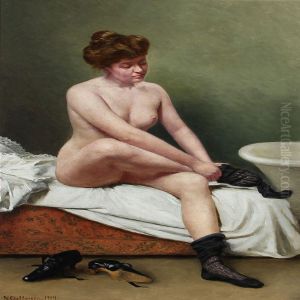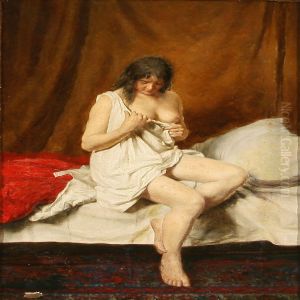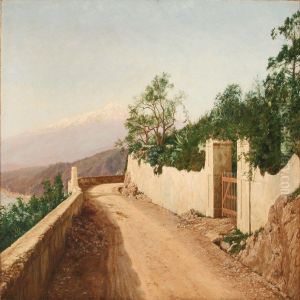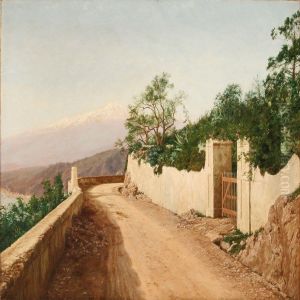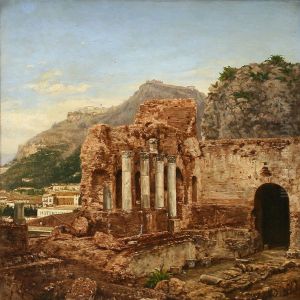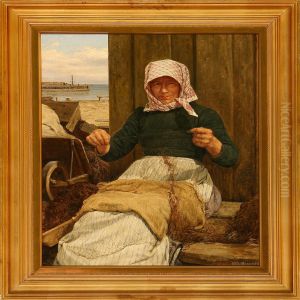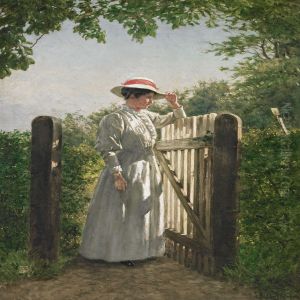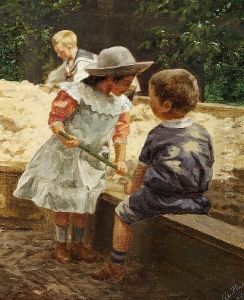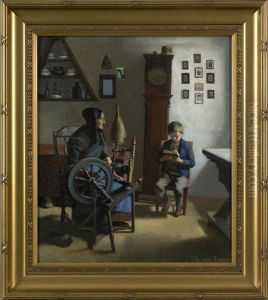Niels Christian Hansen Paintings
Niels Christian Hansen was a Danish painter born on October 10, 1850, in Copenhagen, Denmark. He is primarily known for his contributions to portrait and genre painting, showcasing a unique blend of realism and impressionistic touches that captured the essence of Danish life and culture during the late 19th and early 20th centuries. Hansen showed an early interest in art, leading him to pursue formal education at the Royal Danish Academy of Fine Arts in Copenhagen, where he studied from 1868 to 1875. His education was pivotal in shaping his artistic direction, providing him with the technical skills and the classical foundation that would inform his later work.
During his career, Hansen was heavily influenced by the cultural and social movements of his time. He was part of the broader European movement towards realism and later, impressionism, which sought to depict everyday life with a new sensitivity and attention to light and atmosphere. Unlike many of his contemporaries who focused on landscapes and urban scenes, Hansen had a profound interest in the human condition, which is evident in his portraits and genre scenes. These works often depicted ordinary Danish people, from fishermen and farmers to family members and children, rendered with an empathy and naturalism that were ahead of his time.
Hansen's contributions to Danish art were recognized with various awards and medals throughout his career. He participated in numerous exhibitions, both nationally and internationally, helping to promote Danish art on the global stage. Despite his success, Hansen remained deeply connected to his Danish roots, which continued to inspire his work until his death on February 10, 1922.
His legacy is preserved in Denmark's national galleries and museums, as well as in private collections around the world. Niels Christian Hansen is remembered as a significant figure in the transition from traditional to more modern forms of painting in Denmark, bridging the gap between the austere classicism of the early 19th century and the more expressive and light-filled approaches of the late 19th and early 20th centuries.
